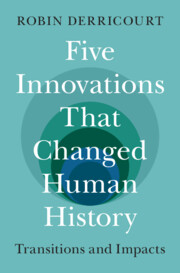Refine search
Actions for selected content:
159 results
Nuclear fear and anxiety: Exercises in future thinking
- Part of
-
- Journal:
- Memory, Mind & Media / Volume 4 / 2025
- Published online by Cambridge University Press:
- 04 November 2025, e19
-
- Article
-
- You have access
- Open access
- HTML
- Export citation
Chapter 33 - Technology
- from Part VIII - Ideas, Beliefs and Interventions
-
-
- Book:
- Schoenberg in Context
- Published online:
- 04 September 2025
- Print publication:
- 04 September 2025, pp 325-331
-
- Chapter
- Export citation
Chapter 4 - Recorded Stand-Up from Radio to Netflix
- from Part I - Time and Place
-
-
- Book:
- The Cambridge Companion to Stand-Up Comedy
- Published online:
- 21 August 2025
- Print publication:
- 04 September 2025, pp 83-96
-
- Chapter
- Export citation
18 - Television and the Janus Face of Chinese Hip-Hop
- from Part IV - Contexts for Rap
-
-
- Book:
- The Cambridge Companion to Global Rap
- Published online:
- 25 July 2025
- Print publication:
- 14 August 2025, pp 261-272
-
- Chapter
- Export citation
Chapter 31 - Pierre Boulez at the BBC
- from Part V - Multiple Activities
-
-
- Book:
- Boulez in Context
- Published online:
- 08 July 2025
- Print publication:
- 24 July 2025, pp 320-326
-
- Chapter
- Export citation
Chapter 12 - Latinx Melodrama
- from Part III - Emerging Media
-
-
- Book:
- Latinx Literature in Transition, 1992–2020
- Published online:
- 19 June 2025
- Print publication:
- 03 July 2025, pp 221-239
-
- Chapter
- Export citation
5 - Color Commentary
-
- Book:
- Gift and Grit
- Published online:
- 26 May 2025
- Print publication:
- 12 June 2025, pp 152-181
-
- Chapter
- Export citation
Chapter 6 - War and the Diary
-
- Book:
- The Strange History of Samuel Pepys's Diary
- Published online:
- 24 April 2025
- Print publication:
- 24 April 2025, pp 108-130
-
- Chapter
- Export citation
Chapter 40 - Shelley and Popular Culture
- from Part IV - Afterlives
-
-
- Book:
- Percy Shelley in Context
- Published online:
- 17 April 2025
- Print publication:
- 24 April 2025, pp 309-316
-
- Chapter
- Export citation
Chapter 20 - Fatwās on Aspects of Modern Life
- from Part III - Legal Opinions (Fatwās)
-
-
- Book:
- Islamic Law in Context
- Published online:
- 14 November 2024
- Print publication:
- 21 November 2024, pp 214-222
-
- Chapter
- Export citation
Chapter 6 - Communicating Wirelessly
-
- Book:
- Five Innovations That Changed Human History
- Published online:
- 01 November 2024
- Print publication:
- 21 November 2024, pp 187-234
-
- Chapter
- Export citation
Ultra-processed food consumption is related to screen time among Brazilian adolescents, adults and older adults
-
- Journal:
- British Journal of Nutrition / Volume 133 / Issue 1 / 14 January 2025
- Published online by Cambridge University Press:
- 11 November 2024, pp. 118-125
- Print publication:
- 14 January 2025
-
- Article
-
- You have access
- Open access
- HTML
- Export citation
Wer Viewership and Queer Imag(in)ing: Thai Soap Opera Shadow of Love and Boys Love Media
-
- Journal:
- TRaNS: Trans-Regional and -National Studies of Southeast Asia / Volume 13 / Issue 1 / May 2025
- Published online by Cambridge University Press:
- 11 November 2024, pp. 92-106
-
- Article
- Export citation

Five Innovations That Changed Human History
- Transitions and Impacts
-
- Published online:
- 01 November 2024
- Print publication:
- 21 November 2024
Job Talk: Candidate Gender and Presentation of Prior Experience in Television Ads in the US
-
- Journal:
- Politics & Gender / Volume 20 / Issue 4 / December 2024
- Published online by Cambridge University Press:
- 30 September 2024, pp. 814-833
-
- Article
-
- You have access
- Open access
- HTML
- Export citation
“My Army Family”: Civil-Military Representation in Military-Sponsored Television Content in Pakistan
-
- Journal:
- Critical Pakistan Studies / Volume 1 / Issue 1-2 / May 2023
- Published online by Cambridge University Press:
- 19 September 2024, pp. 206-237
-
- Article
-
- You have access
- Open access
- HTML
- Export citation
4 - The B Word
-
- Book:
- Bitch
- Published online:
- 13 June 2024
- Print publication:
- 27 June 2024, pp 98-130
-
- Chapter
- Export citation
Chapter 22 - The Young People’s Concerts
- from Part IV - Bernstein as Musical and Cultural Ambassador
-
-
- Book:
- Leonard Bernstein in Context
- Published online:
- 06 April 2024
- Print publication:
- 28 March 2024, pp 183-189
-
- Chapter
- Export citation
Chapter 40 - Cultural Icon
- from Part VI - The Legacy
-
-
- Book:
- Leonard Bernstein in Context
- Published online:
- 06 April 2024
- Print publication:
- 28 March 2024, pp 339-347
-
- Chapter
- Export citation
Chapter 37 - Major Writings
- from Part VI - The Legacy
-
-
- Book:
- Leonard Bernstein in Context
- Published online:
- 06 April 2024
- Print publication:
- 28 March 2024, pp 314-321
-
- Chapter
- Export citation
